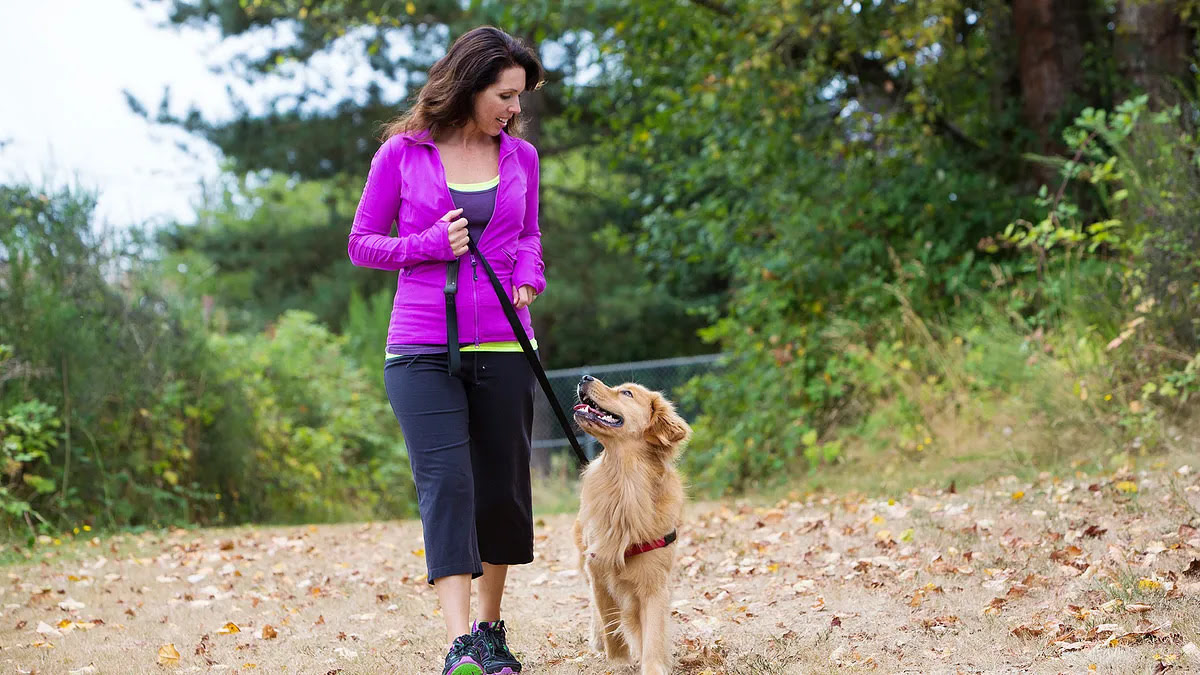Home>Health & Wellness>Common Health Issues>Muscular and Joint Health>When Is It Too Cold For A Dog With Arthritis


Muscular and Joint Health
When Is It Too Cold For A Dog With Arthritis
Modified: February 21, 2024
Learn how to protect your dog's muscular and joint health in cold weather. Discover when it's too cold for a dog with arthritis and how to keep them comfortable.
(Many of the links in this article redirect to a specific reviewed product. Your purchase of these products through affiliate links helps to generate commission for Pawsomeoldies.com, at no extra cost. Learn more)
Table of Contents
Introduction
Arthritis is a common condition that affects dogs of all ages and breeds. It can cause discomfort, stiffness, and reduced mobility, impacting a dog's overall quality of life. As responsible pet owners, it's crucial to understand how environmental factors, such as cold weather, can exacerbate the symptoms of arthritis in our furry companions.
When the temperature drops, dogs with arthritis may experience increased pain and stiffness, making it challenging for them to move around comfortably. As a result, it's essential for pet owners to be mindful of the impact that cold weather can have on their dogs' arthritic condition.
In this article, we will delve into the effects of cold weather on dogs with arthritis, explore the signs that indicate when it's too cold for a dog with arthritis, and provide practical tips for keeping our beloved pets warm and comfortable during chilly weather. By gaining a deeper understanding of how cold temperatures can affect dogs with arthritis, we can take proactive measures to ensure their well-being and alleviate their discomfort.
Understanding the unique challenges that dogs with arthritis face in cold weather will empower pet owners to make informed decisions and provide the necessary support to help their furry friends thrive, even in the face of challenging environmental conditions. Let's embark on this insightful journey to enhance our knowledge and compassion for dogs with arthritis, ultimately improving their quality of life.
Understanding Arthritis in Dogs
Arthritis, a condition commonly associated with aging, also affects our canine companions. It refers to the inflammation of the joints, leading to discomfort, stiffness, and reduced mobility in dogs. There are various types of arthritis that can affect dogs, including osteoarthritis, rheumatoid arthritis, and infectious arthritis. Osteoarthritis, in particular, is the most prevalent form of arthritis in dogs, often resulting from wear and tear on the joints over time.
The onset of arthritis in dogs can be influenced by a range of factors, including genetics, obesity, joint abnormalities, previous injuries, and developmental disorders. Large breed dogs, such as Labrador Retrievers and German Shepherds, are more susceptible to developing arthritis due to their size and weight, which places added stress on their joints.
As dogs age, the cartilage that cushions their joints may deteriorate, leading to friction and discomfort during movement. This can manifest as stiffness, reluctance to engage in physical activities, and difficulty rising from a lying or sitting position. Additionally, dogs with arthritis may exhibit signs of pain, such as whimpering, licking or biting at the affected joints, and changes in their gait.
It's important for pet owners to recognize the signs of arthritis in their dogs early on, as early intervention can significantly improve the management of the condition. Consulting with a veterinarian is crucial for obtaining an accurate diagnosis and developing a tailored treatment plan for the affected dog.
Understanding the underlying mechanisms of arthritis in dogs allows pet owners to empathize with their furry companions and provide the necessary support and care. By gaining insight into the challenges posed by arthritis, we can take proactive steps to enhance the well-being of our beloved pets and ensure they lead fulfilling lives, despite the limitations imposed by this condition.
How Cold Weather Affects Dogs with Arthritis
Cold weather can significantly impact dogs with arthritis, exacerbating their symptoms and diminishing their overall comfort. The physiological response of a dog's body to cold temperatures can intensify the discomfort associated with arthritis, leading to increased pain and stiffness in the joints.
When exposed to cold weather, dogs with arthritis experience a constriction of blood vessels near the skin's surface as a natural mechanism to conserve body heat. This constriction reduces blood flow to the extremities, including the joints, which can exacerbate inflammation and discomfort. As a result, the affected joints may become stiffer and more painful, making it challenging for the dog to move freely and comfortably.
Moreover, the cold weather can prompt dogs to adopt a more sedentary lifestyle, as they may be less inclined to engage in physical activities that could further aggravate their arthritic joints. Reduced physical activity can lead to muscle stiffness and decreased joint flexibility, compounding the challenges faced by dogs with arthritis during colder months.
In addition to the physiological effects, the psychological impact of cold weather on dogs with arthritis should not be overlooked. Just as humans tend to feel more lethargic and achy in cold weather, dogs with arthritis may exhibit signs of decreased energy and enthusiasm due to the discomfort caused by the low temperatures.
Furthermore, the dampness often associated with cold weather can exacerbate the symptoms of arthritis in dogs. Moisture can seep into the joints, intensifying inflammation and discomfort. This can be particularly pronounced in regions where cold weather is accompanied by rain, snow, or high humidity, posing additional challenges for dogs with arthritis.
Understanding how cold weather affects dogs with arthritis is essential for pet owners, as it underscores the need for proactive measures to mitigate the impact of low temperatures on their furry companions. By recognizing the specific challenges posed by cold weather, pet owners can take informed steps to ensure the well-being and comfort of their dogs, even in the face of adverse weather conditions.
Signs That It's Too Cold for a Dog with Arthritis
Recognizing the signs that indicate when it's too cold for a dog with arthritis is crucial for pet owners to provide the necessary support and intervention. Dogs with arthritis may exhibit specific behaviors and physical manifestations that signal their discomfort and struggle in cold weather. By being attuned to these signs, pet owners can take proactive measures to ensure their furry companions remain warm and comfortable during chilly temperatures.
-
Increased Lethargy: When the weather turns cold, dogs with arthritis may display heightened lethargy and reluctance to engage in physical activities. They may appear more subdued and less enthusiastic about their usual routines, opting to rest or sleep for extended periods. This increased lethargy is often a response to the discomfort and stiffness experienced in their arthritic joints due to the cold weather.
-
Difficulty Rising: Dogs with arthritis may encounter greater difficulty rising from a lying or sitting position when the weather is cold. The stiffness and pain in their joints can be exacerbated by low temperatures, making it challenging for them to transition between different postures. Pet owners may observe their dogs struggling to stand up or exhibiting signs of discomfort when attempting to move.
-
Altered Gait: Cold weather can impact a dog's gait, particularly if they have arthritis. Dogs may exhibit a more pronounced limp or favor certain limbs when walking, indicating increased discomfort in their arthritic joints. Observing changes in the dog's gait, such as uneven weight distribution or a reluctance to put pressure on specific limbs, can serve as a clear indicator of the adverse effects of cold weather on their arthritic condition.
-
Increased Vocalization: Dogs with arthritis may vocalize more frequently or exhibit signs of distress when the weather is cold. Whimpering, whining, or vocal expressions of discomfort can indicate that the cold temperatures are intensifying their arthritic pain. Pet owners should pay attention to any changes in their dog's vocal behavior, as it can provide valuable insights into their level of discomfort.
-
Seeking Warmth: When it's too cold for a dog with arthritis, they may actively seek out warm and cozy spots in the home. This could include snuggling near heating vents, seeking out sunny spots, or curling up with blankets to alleviate the discomfort caused by the cold weather. Observing the dog's preference for warmth-seeking behaviors can signal their need for additional heat and comfort during colder periods.
By recognizing these signs, pet owners can take proactive steps to address the impact of cold weather on their dogs with arthritis. Providing warm bedding, adjusting the indoor temperature, and minimizing outdoor exposure during extreme cold can help alleviate the discomfort experienced by dogs with arthritis, ensuring they remain cozy and content despite the challenges posed by low temperatures.
Tips for Keeping a Dog with Arthritis Warm
-
Provide Adequate Indoor Heating: Maintaining a warm and comfortable indoor environment is essential for dogs with arthritis, especially during cold weather. Setting the thermostat to a temperature that is conducive to their well-being can help alleviate the discomfort caused by low temperatures. Additionally, using heated pet beds or placing cozy blankets in their favorite resting spots can offer supplementary warmth and support.
-
Protective Clothing: Consider outfitting your dog with a snug-fitting sweater or jacket designed for canine use. These garments can provide an extra layer of insulation, particularly for dogs with arthritis who may be more sensitive to cold temperatures. Ensure that the clothing fits comfortably and does not restrict your dog's movement.
-
Warm and Cozy Bedding: Providing a soft and well-padded bed for your dog can help insulate them from cold surfaces and minimize joint stiffness. Opt for orthopedic or heated beds specifically designed for dogs with arthritis, as these can offer additional support and warmth. Elevating the bed slightly off the ground can also prevent exposure to chilly drafts.
-
Regular Exercise Indoors: Engaging your dog in gentle indoor exercises can help maintain joint flexibility and prevent stiffness during cold weather. Activities such as controlled walking, gentle stretching, and interactive play can promote circulation and alleviate discomfort. Consult with your veterinarian to develop a suitable indoor exercise routine tailored to your dog's specific needs.
-
Supplement with Omega-3 Fatty Acids: Omega-3 fatty acids, found in fish oil supplements, can support joint health and reduce inflammation in dogs with arthritis. Consult with your veterinarian to determine the appropriate dosage and ensure that the supplements are safe and beneficial for your dog. Incorporating omega-3 fatty acids into their diet can contribute to overall joint comfort and mobility.
-
Massage and Physical Therapy: Gentle massage and physical therapy techniques can help alleviate muscle tension and promote circulation in dogs with arthritis. Massaging the affected joints using gentle, circular motions can provide relief from stiffness and discomfort. Additionally, specialized physical therapy exercises, under the guidance of a professional, can aid in maintaining joint mobility and reducing pain.
-
Minimize Exposure to Cold and Dampness: Limiting your dog's exposure to cold and damp outdoor conditions is crucial for managing their arthritis during inclement weather. Schedule shorter and less frequent outdoor activities, and ensure that your dog remains dry and warm when venturing outside. Wiping their paws and fur after outdoor excursions can prevent moisture from exacerbating joint discomfort.
By implementing these proactive measures, pet owners can effectively support their dogs with arthritis and mitigate the impact of cold weather on their joint health and overall well-being. Prioritizing warmth, comfort, and tailored care can significantly enhance the quality of life for dogs living with arthritis, allowing them to thrive in spite of challenging environmental conditions.
Conclusion
In conclusion, the impact of cold weather on dogs with arthritis is a significant consideration for pet owners striving to provide optimal care for their furry companions. The physiological and psychological effects of low temperatures can exacerbate the discomfort and stiffness experienced by dogs with arthritis, necessitating proactive measures to ensure their well-being during colder months.
Understanding the unique challenges posed by arthritis in dogs, particularly in the context of cold weather, empowers pet owners to take informed steps to alleviate their pets' discomfort and enhance their quality of life. By recognizing the signs that indicate when it's too cold for a dog with arthritis, such as increased lethargy, difficulty rising, altered gait, increased vocalization, and seeking warmth, pet owners can tailor their care to address the specific needs of their arthritic dogs during chilly periods.
Implementing practical strategies to keep dogs with arthritis warm, such as providing adequate indoor heating, protective clothing, warm and cozy bedding, regular indoor exercise, omega-3 fatty acid supplementation, massage, physical therapy, and minimizing outdoor exposure to cold and dampness, can significantly mitigate the impact of cold weather on their joint health and overall comfort.
Ultimately, the well-being of dogs with arthritis during cold weather hinges on the proactive and compassionate support provided by their owners. By prioritizing warmth, comfort, and tailored care, pet owners can ensure that their beloved dogs with arthritis thrive, even in the face of challenging environmental conditions. Consulting with a veterinarian to develop a comprehensive care plan tailored to the specific needs of a dog with arthritis is essential for optimizing their comfort and mobility during colder months.
As responsible pet owners, it is our duty to remain attuned to the unique needs of our dogs with arthritis and take proactive measures to mitigate the impact of cold weather on their well-being. By fostering a warm, supportive environment and implementing targeted interventions, we can enhance the lives of our arthritic canine companions, allowing them to navigate the challenges of cold weather with comfort and resilience.














